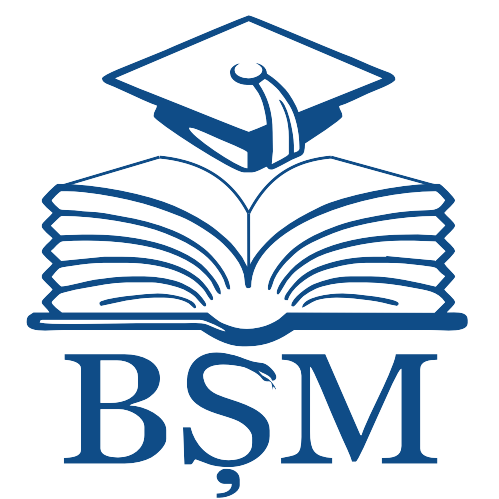|
|
- IRMS - Nicolae Testemitanu SUMPh
- 1. COLECȚIA INSTITUȚIONALĂ
- Revista de Științe ale Sănătății din Moldova
- Revista de Științe ale Sănătății din Moldova : Moldovan Journal of Health Sciences 2024 Vol. 11, Issue 2
Please use this identifier to cite or link to this item:
http://hdl.handle.net/20.500.12710/29510
| Title: | Sindromul Mirizzi: una din complicațiile litiazei biliare |
| Other Titles: | Mirizzi syndrome: one of the complications of gallstone |
| Authors: | Cucu, Ivan
Ferdohleb, Alexandru
Hotineanu, Adrian
Cotoneț, Ion |
| Keywords: | Mirizzi syndrome;complications;treatment |
| Issue Date: | 2024 |
| Publisher: | Universitatea de Stat de Medicină şi Farmacie „Nicolae Testemiţanu” din Republica Moldova |
| Citation: | CUCU, Ivan; FERDOHLEB, Alexandru; HOTINEANU, Adrian; COTONEȚ, Ion. Sindromul Mirizzi: una din complicațiile litiazei biliare = Mirizzi syndrome: one of the complications of gallstone. In: Revista de Ştiinţe ale Sănătăţii din Moldova = Moldovan Journal of Health Sciences. 2024, vol. 11(3), an. 2, p. 493. ISSN 2345-1467. |
| Abstract: | Introducere. Sindromul Mirizzi (SM) reprezintă una dintre
cele mai nefavorabile complicații a litiazei biliare, morfologic tradusă prin compresia ductului hepatic comun sau coledoc de către calcul, cu formare de strictură la acest nivel sau o
fistulă dintre colecist și căile biliare. Scopul lucrării. Evaluarea particularităților de diagnostic și tratament chirurgical în dependență de tipul SM. Material și metode. Lotul
de cercetare a inclus 75 pacienți. Diagnosticul instrumental utilizat: ultrasonografie (USG)-75(100%), colangiopancreatografia retrogradă endoscopică (ERCP)-69(92%), rezonanța magnetică regim colangiografic (MRCP)-18(24%),
CT cu contrast-12(16%). În 48 cazuri (64%), constatarea
SM a fost intraoperatorie. Rezultate. Rezolvarea a fost exclusiv chirurgicală. Tip I-17(22,6%) pacienți, atestarea confluenții dintre colecist și calea biliară principală (CBP), efectuarea colecistectomiei. Tip II-28(37,3%), fistulă sub 1/3
din diametrul CBP, s-a efectuat plastia defectului pe drenul
Kehr. Tip III-18(24%), defectul CBP a fost 2/3 din diametru,
în 12 cazuri (16%) s-a efectuat plastia CBP cu lambou vascularizat din vezicula biliară și drenarea CBP tip Robson, în
alte 6 cazuri (8%) s-a efectuat hepatico-jejuno anastomoză
pe ansa „Y” a la Roux. Tip IV-10(13,3%), defectul parietal
a fost de peste 67% din diametrul CBP, s-a efectuat exclusiv hepatico-jejuno anastomoză pe ansa „Y” a la Roux. Tip
V-2(2,6%) s-a efectuat drenarea CBP tip Kehr și suturarea
fistulei enterice. Concluzii. Metodele elective în diagnosticul sindromului Mirizzi a fost colangiopancreatografia
retrogradă endoscopică și rezonanța magnetică regim colangiografic. În pofida metodelor contemporane de diagnostic, complexitatea majoră a fost atestată în 48 cazuri (64%),
unde constatarea diagnosticului a fost intraoperatorie.
Background. Mirizzi syndrome (MS) represents one of the
most unfavorable complications of gallstones, morphologically translated by the compression of the common hepatic
duct or main bile duct by the gallstone, with the formation
of a stricture at this level or a fistula between the gallbladder and the bile ducts. Objective of the study. Evaluation
of the particularities of diagnosis and surgical treatment
depending on the type of MS. Material and methods. The
research group included 75 patients. Instrumental diagnosis used: ultrasonography (USG)-75(100%), endoscopic
retrograde cholangiopancreatography (ERCP)-69(92%),
magnetic resonance cholangiography (MRCP)-18(24%), CT
with contrast-12(16%) ). In 48 cases (64%), the finding of
MS was intraoperative. Results. The solution was exclusively surgical. Type I-17(22.6%) patients, attestation of confluence between the gallbladder and the main bile duct (MBD),
performing cholecystectomy. Type II-28(37.3%), fistula less
than 1/3 of the diameter of the MBD, plasty of the defect
was performed on the Kehr drain. Type III-18(24%), the
MBD defect was 2/3 of the diameter, in 12 cases (16%)
MBD plasty with a vascularized gallbladder flap and Robson-type MBD drainage was performed, in another 6 cases
(8%) Roux-en-Y hepaticojejunostomy. Type IV-10 (13.3%),
the parietal defect was over 67% of the MBD diameter, exclusively Roux-en-Y hepaticojejunostomy. Type V-2 (2.6%)
was performed Kehr-type MBD drainage and suturing of the
enteric fistula. Conclusion. Elective methods in the diagnosis of Mirizzi syndrome were endoscopic retrograde cholangiopancreatography and magnetic resonance cholangiographic regime. Despite contemporary diagnostic methods,
the major complexity was attested in 48 cases (64%), where
the diagnosis was intraoperatively established. |
| metadata.dc.relation.ispartof: | Revista de Științe ale Sănătății din Moldova = Moldovan Journal of Health Sciences: Conferinţa ştiinţifică anuală "Cercetarea în biomedicină și sănătate: calitate, excelență și performanță", 16-18 octombrie, 2024 |
| URI: | https://cercetare.usmf.md/sites/default/files/inline-files/MJHS_11_3_2024_anexa2__site.pdf
https://repository.usmf.md/handle/20.500.12710/29510 |
| ISSN: | 2345-1467 |
| Appears in Collections: | Revista de Științe ale Sănătății din Moldova : Moldovan Journal of Health Sciences 2024 Vol. 11, Issue 2
|
Items in DSpace are protected by copyright, with all rights reserved, unless otherwise indicated.
|


